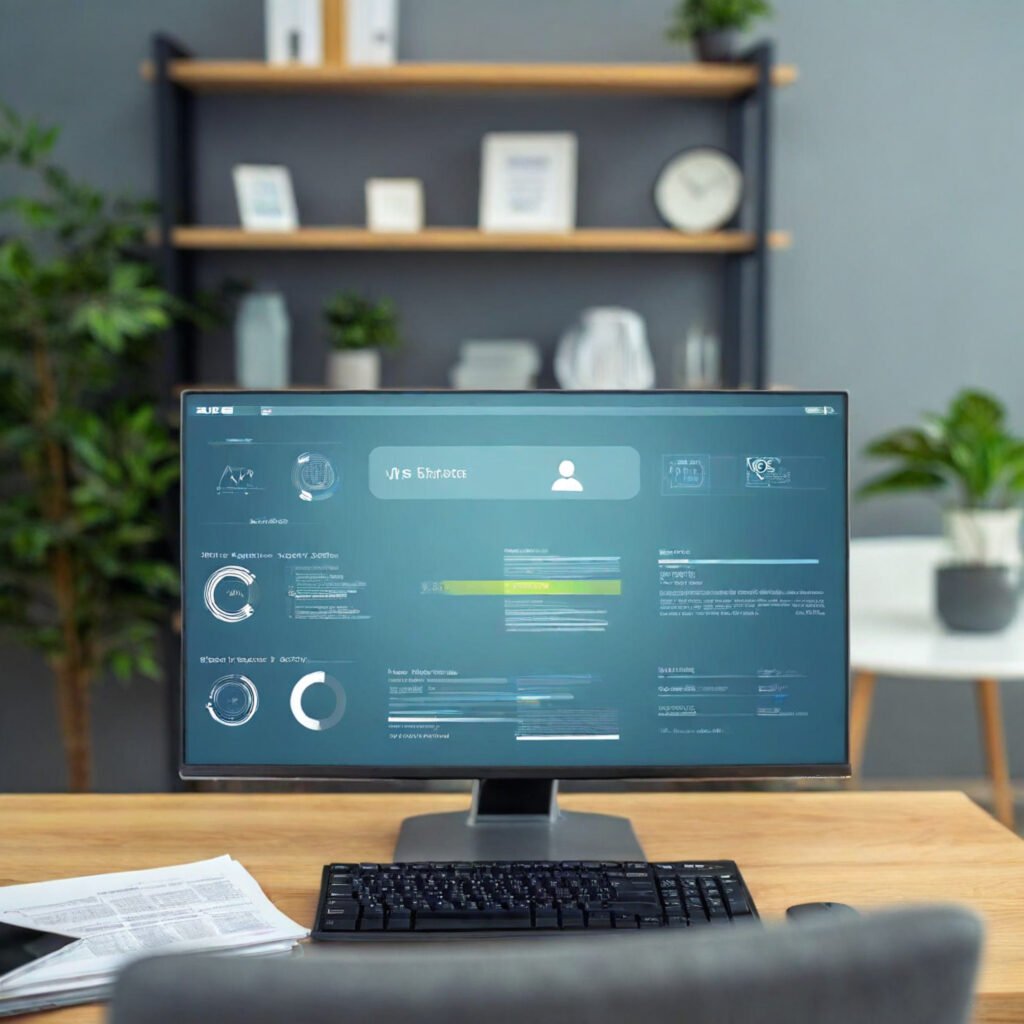AI Onboarding Made Simple: A Practical Guide for Modern Workplaces
Companies lose up to 16% of their employees within the first six months, especially when you have large organizations. AI onboarding changes how companies welcome and integrate new team members into their workforce. This approach tackles a crucial business challenge.
Disengaged employees cost organizations around $90 million yearly due to lost productivity. But the numbers tell a different story when companies get onboarding right. A well-executed onboarding process can improve new hire retention by 82% and boost employee engagement by 54%. Our experience shows that automated onboarding with smart tools helps new hires transition better. Companies that use AI-powered virtual onboarding assistants see their employees become 18 times more committed to their organizations.
This piece shows you how AI onboarding tools change the employee experience while bringing major benefits to businesses. You’ll learn to implement these economical solutions in your workplace. We cover everything from individual-specific experiences to multilingual support—whether you’re building a new system or improving your current one.
Why AI is Changing Onboarding Forever
Traditional onboarding is going through a complete transformation. Manual processes that once ruled HR departments are making way for smart systems. These systems make integration easier and help new employees participate from their first day.
Moving from manual to automated onboarding
HR teams usually spend 8-11 hours per new hire on manual onboarding tasks. Research shows 69% of managers say it takes too much time and attention. Traditional methods often create paperwork delays, uneven experiences, and slow down new employee productivity.
AI-powered solutions are changing everything by automating routine tasks such as:
- Digital paperwork creation and management
- Automatic message delivery throughout onboarding
- Chatbots that collect feedback and answer questions
- Training compliance tracking
Numbers tell the story – companies using AI for onboarding cut their onboarding time by 53%. They save about $18,000 each year through automation. Today, 45% of HR professionals use AI-driven onboarding. Another 25% plan to start using it in 2024.
AI onboarding tools make better first impressions
First impressions count. AI makes the onboarding experience better by creating personal learning experiences that line up with each employee’s role, location, and work preferences.
AI onboarding assistants create custom learning paths for each position instead of using one standard approach. Employees can work through self-guided modules at their own speed, which naturally fits different schedules. Research proves that employees with customized onboarding become productive 50% faster.
AI works alongside human interaction rather than replacing it. When AI handles paperwork, HR professionals can spend more time building relationships with new employees.
AI helps remote and hybrid workplaces
AI has become crucial for creating consistent onboarding experiences in today’s distributed workforce. It helps solve remote integration challenges by:
Making sure content delivery stays the same everywhere, so every new employee gets the same quality introduction. It also helps create virtual group activities that build community among team members working in different locations.
AI constantly analyzes how people interact on different platforms. This helps catch potential problems early. Companies that use AI-powered onboarding keep their new hires 30% longer in the first year.
AI helps hybrid teams by connecting different systems like HRIS and collaboration tools (Slack, Teams). This creates one unified system where new employees get updates, finish training, and managers track progress with up-to-the-minute data.
7 Practical Use Cases of AI in Onboarding

AI tools are reshaping onboarding in every industry. Here’s how they work in real life, beyond just theory.
1. Individual-specific onboarding experiences
AI looks at employee profiles, job roles, and backgrounds to create custom onboarding plans. These tailored programs help new hires get only the information they need for their specific jobs, which cuts down on extra content. Companies that use AI to personalize onboarding see their employees become productive 67% faster and report 34% higher satisfaction in their first 90 days.
2. AI onboarding assistants and chatbots
Virtual assistants help employees around the clock. They answer questions about policies and guide new team members through setup steps. HR teams now handle fewer routine questions because these chatbots take care of common problems automatically. Teams using AI assistants solve issues 34% faster, and 95% of employees use these tools regularly.
3. Automating onboarding paperwork
AI speeds up document checks, form filling, and information gathering. This automation cuts down manual data entry by 75%. HR teams can now spend more time building real connections with new hires.
4. Up-to-the-minute feedback and check-ins
AI tools track how onboarding progresses and send automatic check-ins to gather feedback. These systems spot employees who might become disengaged by analyzing patterns, which lets HR step in early. Teams can fix potential problems before they hurt performance.
5. AI-driven learning paths
AI algorithms build training sequences based on each person’s skills and learning style. These adaptive programs find knowledge gaps and suggest helpful resources, which help people learn faster. Learners get content that matches their needs and pace.
6. Multilingual content and translation
AI translation makes onboarding materials available to everyone, regardless of language. Tools like Google Translate can convert entire pages, including menus, videos, and subtitles. These AI translation programs get better over time as people provide feedback.
7. Smart onboarding checklists and reminders
AI creates custom task lists that change as employees progress through their training. Smart reminders make sure people complete important tasks, which reduces coordination time by 85%. These systems book orientation sessions and training workshops automatically while fixing schedule conflicts.
Key Benefits of Automating the Onboarding Process
AI in the onboarding process brings real benefits that revolutionize how organizations welcome new team members. Numbers tell a compelling story about these intelligent systems.
Faster time-to-productivity
Companies see dramatic improvements in their employees’ productivity timeline. Buffer reported that structured AI onboarding reduced time-to-productivity by 50%. Their experience matches Unilever’s results, where AI-driven chatbots sped up their onboarding process by about 20%. Employees who receive custom onboarding become productive 50% faster than others. This speed boost directly affects business results. Companies can’t wait three months to get teams up to speed while their competitors do it in weeks, especially in markets where speed determines market share.
Improved employee engagement and retention
Retention numbers paint an impressive picture. IBM’s Watson Career Coach, an AI-driven platform that looks at employees’ skills and priorities, led to a 30% increase in retention rates. Companies that use AI onboarding solutions keep 82% more new hires. Organizations with strong AI onboarding processes see an 82% improvement in new hire retention. New employees stay committed longer when their onboarding process matches their needs.
Reduced HR workload and errors
AI makes administrative tasks much lighter by:
- Cutting HR involvement from 20 hours to just 12 per new hire
- Reducing manual onboarding time by 75%
- Minimizing human error in financial and compliance documentation
- Decreasing associated costs for 38% of organizations
Document collection takes 45-105 fewer minutes per hire when organizations use AI for paperwork automation.
Scalability for growing teams
AI onboarding delivers consistent experiences, whatever the team size or location. Small businesses with 50-99 employees lead AI adoption – 51% already use AI in their onboarding processes. Hitachi and Texans Credit Union have shown that AI-powered onboarding can cut setup time from weeks to hours. This expandable solution is vital for high-growth organizations that need quality maintenance while growing faster.
How to Implement AI Onboarding Tools Effectively

Making AI work in your onboarding process needs smart planning and the right execution. Let’s get into how you can make this change work well.
Choosing the right AI onboarding assistant
Your organization’s specific needs come first, so start with a use case audit. Find the roles that will get the most value from AI-powered onboarding and create clear timelines. Your platform should have these features:
- Detailed integration options that line up with business apps of all types
- Natural language processing capabilities that help communication flow
- Room to grow as your team expands
- Strong security and privacy protection
Integrating with your existing HR systems
Your new system needs to work smoothly with current technology platforms. Make sure it fits with your HRIS and tools like Slack or Teams, plus your learning management systems. This setup makes communication and data sharing quick, which speeds up your operations. A pilot program in one department helps test how well everything works.
Training your team to work with AI
HR teams and managers need proper training on AI tools. Show them how AI makes onboarding better instead of replacing people. The system needs thorough testing before launch, and training resources should be ready. Deal with any worries early to help people trust the new system.
Measuring success and optimizing continuously
Create a strong system to track key performance indicators like how fast people complete onboarding and reach full productivity. New hires should give feedback every 30 days. Analytics dashboards help spot trends, problems, and ways to improve quickly.
Conclusion
AI onboarding marks a radical alteration in modern workplace employee welcomes. Smart systems cut onboarding time in half and boost retention and involvement rates. Companies that use these technologies see amazing results—50% faster time-to-productivity and 82% better retention rates.
These tools do much more than simple automation. Tailored experiences, virtual assistants, paperwork processing, and adaptive learning paths create a smooth experience. New employees feel valued right from the start. Without doubt, these features help organizations with remote or hybrid teams deliver consistent experiences, whatever their location.
Your AI onboarding experience needs careful planning. You should evaluate your organization’s specific needs. Pick tools that merge with your current systems. Your team needs proper training to work among these intelligent assistants. They should not see them as replacements.
Ever-changing workplaces need smarter, quicker processes. AI onboarding leads the rise of flexible solutions that expand with your organization while quality stays high. These tools help you stay competitive and build meaningful connections with new team members from day one.
Traditional onboarding won’t transform into AI-powered systems overnight. But productivity gains, better retention, and less administrative work make this investment worth it for forward-thinking organizations. Your onboarding process shapes how new hires notice your company culture and their role in it. Making this experience exceptional should be your top priority.



